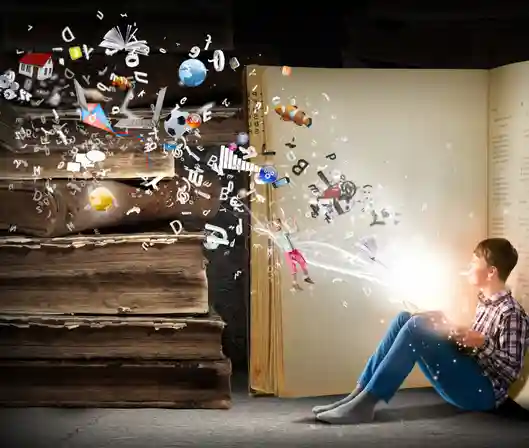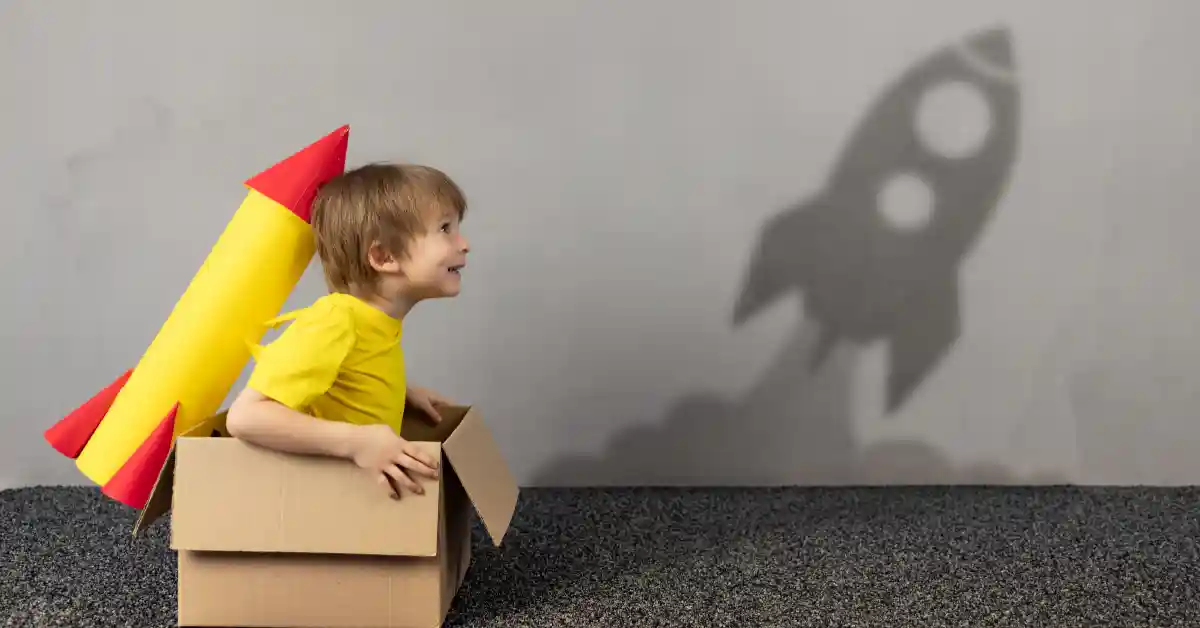

From finger‑painting to fort‑building, childhood is a playground of imagination. As youngsters, we seamlessly blend fantasy and reality—an empty box becomes a rocket, and a sandpit becomes the stage for storytelling. Yet as we mature, many of us lose touch with this free‑wheeling creativity. In this post, we’ll explore how imaginative play shapes the creative brain, why our school systems and adolescent development often blunt that spark, and how we can reclaim it as adults—drawing on developmental psychology, neuroscience, and practical strategies for lifelong creative flourishing.
The Psychology of Creativity: Where Do Ideas Come From?
Neuroscientists have identified the default mode network —a constellation of brain regions active during mind‑wandering—as a key player in creative thought. When you let your mind drift, this network colludes with systems governing dopamine release, reinforcing pattern recognition and the “reward” of novel connections . Meanwhile, psychologists like Robert Sternberg emphasise divergent thinking—the ability to generate multiple solutions to a problem—as central to creativity. Together, these processes enable the brain to weave disparate memories and ideas into fresh, insightful combinations.
How School Systems Can Suppress (or Support) Creative Thinking
Many education systems, however, prioritise correct answers and standardised testing over curiosity. And it’s a problem that has gotten a lot of attention from various sources. In a TED talk with almost 80 million views, Sir Ken Robinson asks ‘Do schools kill creativity?’
Robinson believes “Creativity is as important now in education as literacy and we should treat it with the same status.”
Innovative schools that integrate project‑based learning, arts, and inquiry‑led curricula demonstrate that structured environments need not stifle creativity. When students are encouraged to ask open‑ended questions—“What if…?”—and given the freedom to explore, imagination thrives alongside academic growth.
Creativity and the Adolescent Brain: Pruning or Potential?
During adolescence, the brain undergoes synaptic pruning, strengthening frequently used connections and discarding others.
“ Pruning during adolescence is highly specific and can be pronounced, resulting in a loss of close to 50% of the synaptic connections in some regions”
‘Adolescent Neurodevelopment’ Dr Linda Patia Spear
This pruning has been speculated to help with the “rewiring” of brain connections into adult-typical patterns, and could potentially represent relatively late opportunities for brain plasticity.
While this enhances efficiency and focus, it can also narrow the broad associative thinking that fuels childhood creativity. Research suggests that supporting teens with arts programmes, journaling, and problem‑based projects helps maintain neural flexibility. By intentionally keeping their divergent thinking active, adolescents can emerge with both cognitive maturity and imaginative prowess.
Why Adults Say “I’m Just Not Creative”—and Why It’s Not True
Many adults believe creativity is a gift reserved for a select few. Yet studies by Mark Runco and colleagues show that creativity exists on a spectrum and can be developed through practice . This myth often stems from early criticism or a culture of perfectionism rather than an innate inability. By reframing creativity as a skill rather than a talent, adults can shed shame and recognise their own capacity for originality.
The Role of Play in Adult Neuroplasticity
It’s a common misconception that neuroplasticity—the brain’s ability to rewire itself—is most potent in childhood. In truth, engaging in creative play at any age stimulates new neural pathways, enhancing cognitive flexibility and emotional regulation. Whether you take up improv, learn a musical instrument, or experiment with pottery, these activities provoke the brain to form fresh connections, fostering resilience against stress and cognitive decline.
Imagination and Mental Health: More Linked Than We Think

Creative expression is more than an enjoyable pastime—it’s a vital mechanism for meaning‑making and emotional healing. Adults who lose touch with imaginative play often struggle with rigid thinking and emotional bottling. Art therapy, narrative therapy, Sand tray therapy and other expressive approaches leverage creativity to process trauma, clarify identity, and cultivate self‑understanding. By externalising internal experiences through story, image, or movement, clients can access and integrate difficult emotions in a safe, guided environment.
Parenting and Creativity: Passing the Torch
For parents, sharing creative activities with children offers a two‑way benefit. Building a den together or inventing bedtime stories not only supports your child’s developmental needs but also revives your own imaginative faculties. This reciprocal play reinforces the notion that creativity is a shared human resource, passed down and replenished with each collaborative endeavour. It can also help you spot any signs of difficulties your child might be having.
Small Ways to Reignite Your Creative Spark
You don’t need an art studio or a grand project to awaken your imagination. Try these everyday practices:
- Curiosity journal: Jot down three “what if” questions each morning.
- Doodle breaks: Sketch freely during phone calls or while waiting.
- Micro‑experiments: Combine two unrelated hobbies—cooking and poetry, say—to spark new insights.
- Mindful observation: Spend five minutes noticing patterns in nature, architecture, or conversation.
These small acts prime your brain for creative thought, gradually rebuilding the playful mindset of childhood.

Conclusion
Creativity is not a childhood souvenir—it’s a lifelong necessity for innovation, emotional resilience, and personal fulfilment. By understanding the neural underpinnings of original thought, challenging educational and cultural constraints, and embracing simple practices that honour our innate playfulness, we can reclaim the imaginative freedom we enjoyed as children. Whether through solo exploration or collaborative play, every moment of creative expression is an investment in our cognitive health and emotional wellbeing.
Ready to rekindle your creativity? Explore our counselling and workshops at Positive Mind Works, where we blend research‑informed strategies with compassionate support to help you thrive—at any age.
FAQs:
What is creativity from a psychological perspective?
Creativity is often defined as the ability to generate ideas that are both novel and useful. Psychologists recognise it as a cognitive process involving imagination, divergent thinking, and emotional expression.
Why do children seem more creative than adults?
Children naturally engage in imaginative play and exploration. Their brains are more flexible, and they haven’t yet internalised the fear of making mistakes or being judged, which often inhibits adult creativity.
What’s the importance of creativity in adults?
Creativity in adulthood isn’t just about making art—it plays a vital role in problem-solving, emotional resilience, and mental flexibility. Research shows that creative thinking can improve mood, reduce stress, and enhance wellbeing by helping adults process complex emotions and imagine alternative perspectives. Whether through journaling, innovation at work, or playful activities, engaging with creativity helps adults stay adaptable, curious, and connected to meaning in their lives.
Can adults become more creative, even if they feel they aren’t?
Yes! Research shows creativity is not a fixed trait. With practice and the right mindset, adults can reignite creativity through journaling, play, artistic hobbies, and curiosity-led activities.
What are some simple ways to reconnect with creativity as an adult?
Start small: keep a sketchpad or journal, try a new recipe, build something with your hands, or ask playful “what if” questions. The key is curiosity, not perfection.



